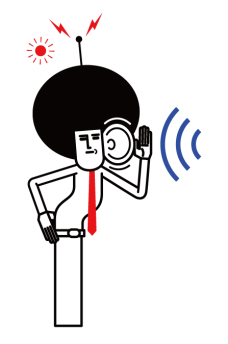Hidden Camera - Spy Camera
A hidden camera is a still or video camera used to film people without their knowledge. The camera is "hidden" because it is either not visible to the subject being filmed, or is disguised as another object. Hidden cameras have become popular for household surveillance, and can be built into common household objects such as smoke detectors, clock radios, motion detectors, ball caps, plants, and cellphones. Hidden cameras may also be used commercially or industrially as security cameras.
A hidden camera can be wired or wireless. The former will be connected to a TV, VCR, or DVR, whereas a wireless hidden camera can be used to transmit a video signal to a receiver within a small radius (up to a few hundred feet).
The Stealth WEGA - Covert camera detector
This unique device was created for professionals in the sphere of the surveillance countermeasures. Thanks to its optical principle the WEGA can discover lenses of all types of covert cameras not depending on their working state. The WEGA’s LED matrix radiates a powerful infrared beam which is then reflected by a video camera’s optics and is easily detected by the operator. The IR-filtering glass built into the WEGA helps the operator to avoid natural reflections from surfaces and concentrate on finding the exact location of a hidden camera.
Usage
- A camera can only be detected from within the zone of which it is surveying. Enter the target zone (the area which may be under surveillance). Usually the target zone is the desktop and surrounding area in a cabinet, bed in a bedroom, etc.
- Turn on the WEGA by pressing and holding the POWER button
- Using a sample camera make sure that the WEGA is operating correctly.
- Scan all probable places where a hidden video camera can be installed. These are usually places in the upper part of the room, especially under the ceiling. Pay attention to the ceiling tiles, smoke, gas and movement detectors and any other devices.
- A white background may mask a camera since such a surface also reflects the IR beams. Therefore be careful when inspecting white surfaces. Try different positions and angles. Change you position a few times.
- Regulate the power of the radiation depending on the distance to the surface being inspected. Set the minimum power (rare flashing) if it is 1-3 meters, middle if 3-7 meters and higher if it is further than 7 meters.
- A shining dot similar to the one you can see on the sample camera is a sign of a hidden video camera. If you see a suspicious point change you position slightly to check that it is not a false response from a metallic object or a bright surface. If the point remains, start a physical inspection of that location.
- Repeat this procedure from a number of points from the target zone.












